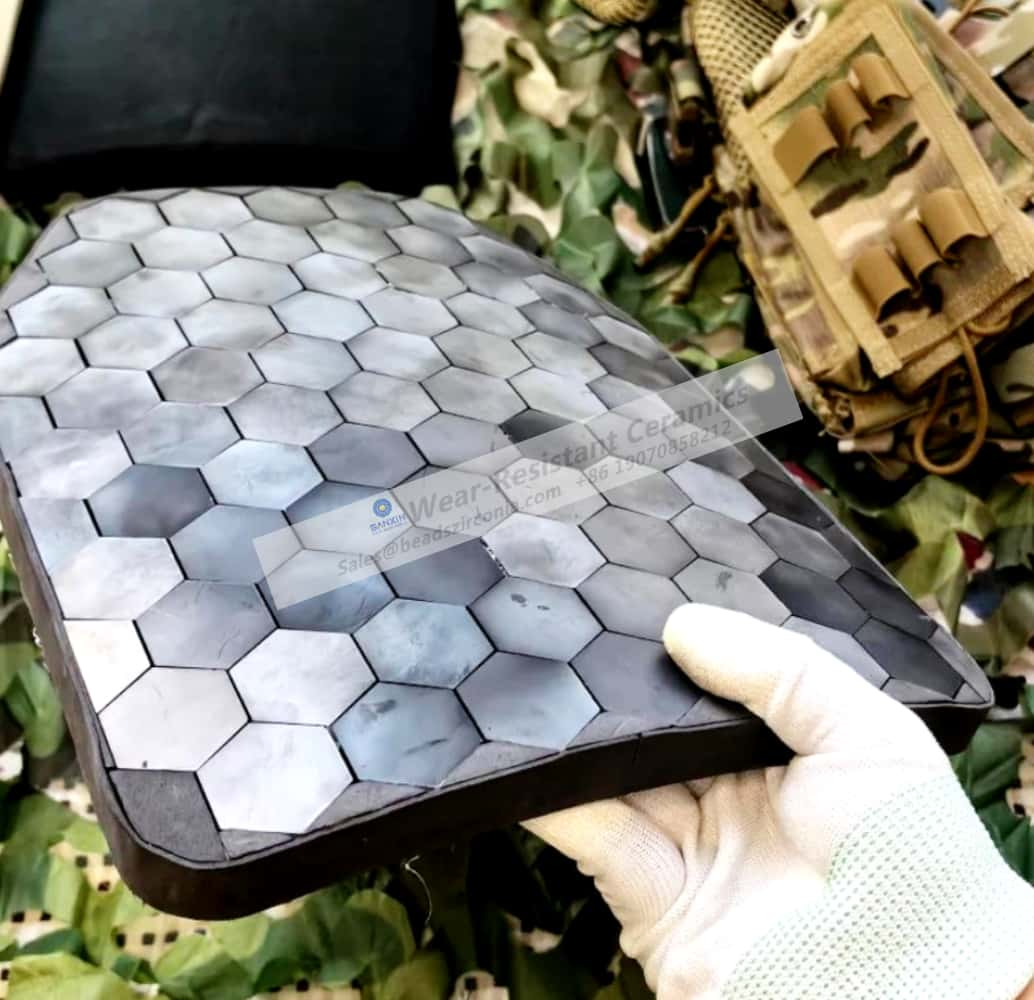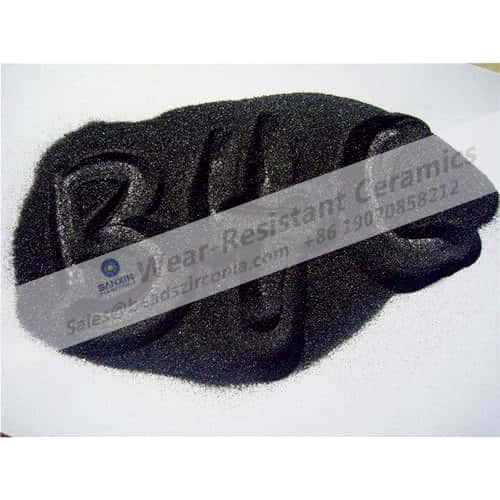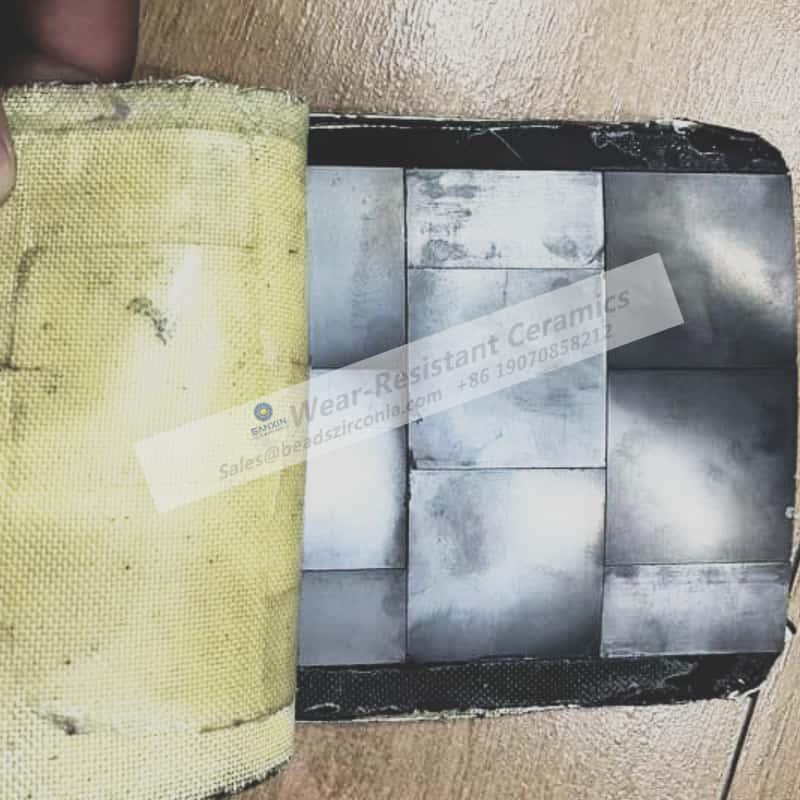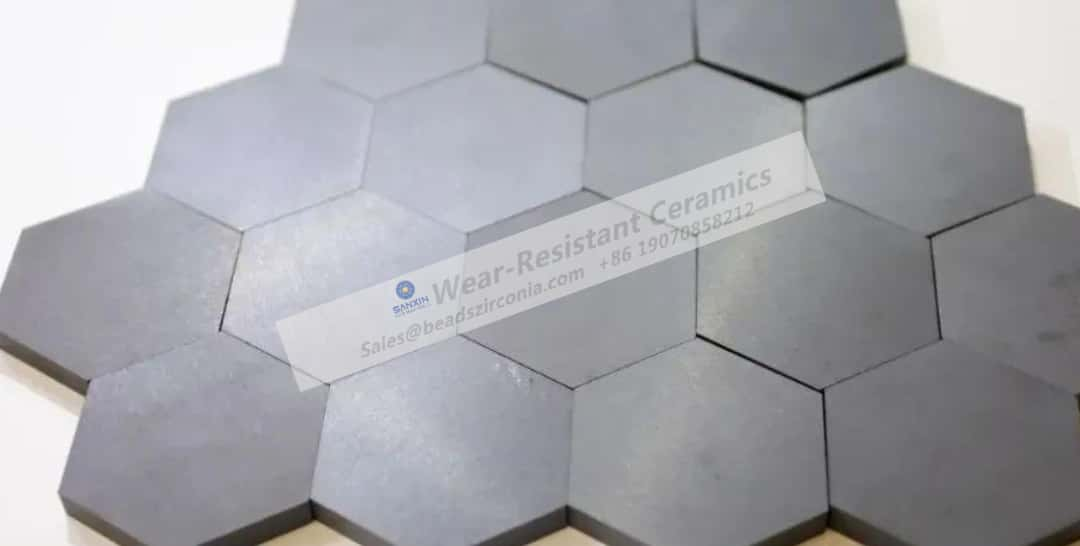
In an era marked by escalating security threats and a growing emphasis on personal and national safety, the development of high - performance protective gear has become a matter of utmost importance. Multiphase boron carbide (B₄C) bulletproof plates have emerged as a revolutionary solution in the field of ballistic protection, leveraging the unique properties of boron carbide and advanced composite materials. This article delves deep into the science behind B₄C bulletproof plates, their manufacturing processes, performance advantages, applications across various sectors, and the future prospects of this cutting - edge technology.
Boron carbide, often referred to as the "black diamond," is a compound with the chemical formula B₄C. It is renowned for its exceptional hardness, second only to diamond on the Mohs scale. This extreme hardness is a result of its unique crystal structure, which consists of icosahedral boron cages and carbon - boron chains. The strong covalent bonds within the structure contribute to its high resistance to deformation and wear.
B₄C also exhibits a low density, making it significantly lighter than many traditional ballistic materials. Its density is approximately 2.52 g/cm³, which is much lower than that of metals like steel (7.85 g/cm³). This lightweight property is a major advantage, especially in applications where weight is a critical factor, such as in military equipment for mobile troops and aerospace defense.
Another remarkable property of B₄C is its high elastic modulus. The elastic modulus measures a material's stiffness or resistance to elastic deformation. B₄C has a high elastic modulus, which means it can withstand significant stress without permanent deformation. This property is crucial for its effectiveness in bulletproof applications, as it allows the material to quickly return to its original shape after being impacted, minimizing the risk of structural failure.

One of the unique features of boron carbide is its excellent neutron absorption capabilities. Boron - 10, an isotope present in boron carbide, has a high cross - section for neutron capture. This property makes B₄C not only suitable for ballistic protection but also for applications in the nuclear industry, such as in neutron shielding materials. In the context of bulletproof plates, this neutron - absorbing property can be an added advantage in scenarios where there is a risk of exposure to neutron - emitting sources, such as in certain military operations near nuclear facilities or in the development of advanced weaponry.
The production of B₄C bulletproof plates begins with the careful selection and preparation of raw materials. High - purity boron carbide powder is the primary ingredient. The purity of the boron carbide is crucial as impurities can significantly affect the final properties of the bulletproof plate. Manufacturers often use chemical vapor deposition (CVD) or high - temperature sintering methods to produce boron carbide powder with the desired purity and particle size distribution.
In addition to boron carbide, other materials are incorporated to create the multiphase structure. These may include binders, such as polymers or ceramic additives, which help to hold the boron carbide particles together and enhance the mechanical properties of the composite. The selection of binders is based on their compatibility with boron carbide, as well as their ability to withstand high - stress conditions and contribute to the overall performance of the bulletproof plate.
Once the raw materials are prepared, they are formed into the desired shape of the bulletproof plate. Common forming methods include hot pressing, cold isostatic pressing (CIP), and injection molding. Hot pressing involves applying heat and pressure simultaneously to the raw material mixture, which helps to densify the material and improve its mechanical properties. CIP, on the other hand, uses uniform pressure from all directions to shape the material, resulting in a more homogeneous product. Injection molding is suitable for producing complex - shaped bulletproof plates with high precision.
After forming, the plates undergo a sintering process. Sintering is a heat - treatment process that further densifies the material by promoting the diffusion of atoms between the boron carbide particles. This process helps to eliminate porosity and improve the strength and hardness of the bulletproof plate. The sintering temperature and time are carefully controlled to optimize the properties of the final product. High - temperature sintering, typically in the range of 2000 - 2200°C, is often used to achieve the desired density and mechanical properties.
To enhance the performance of B₄C bulletproof plates, they are often integrated with other materials. High - strength fiber fabrics, such as Kevlar or carbon fiber, are commonly layered over the ceramic panel. These fiber fabrics act as a secondary layer of protection, preventing crack propagation and reducing the risk of spallation (the ejection of small fragments from the surface of the bulletproof plate).
The combination of hard ceramics and a rigid backing material, such as metal or high - strength polymer, forms the basis of modern composite armor systems. The rigid backing helps to support the ceramic layer and distribute the impact energy over a larger area. It also prevents the bulletproof plate from deforming excessively under impact, ensuring that it can effectively stop bullets and shrapnel.

Multiphase B₄C bulletproof plates offer exceptional ballistic resistance. When a bullet strikes the high - strength ceramic layer, the extreme hardness of B₄C causes the bullet to fracture. As the bullet fragments, the ceramic also breaks, absorbing most of the projectile's kinetic energy. This energy - absorption mechanism is highly effective in stopping bullets and reducing the impact force transmitted to the protected area.
The unique multiphase structure of the bulletproof plate further enhances its ballistic performance. The combination of different materials and phases allows for better energy dissipation and distribution. For example, the soft binder phase can help to absorb and disperse the stress waves generated by the impact, while the hard boron carbide phase provides the primary resistance against the bullet.
The lightweight nature of B₄C bulletproof plates is a significant advantage over traditional ballistic materials. In military applications, soldiers often have to carry heavy loads of equipment, and reducing the weight of body armor can improve their mobility and endurance. B₄C bulletproof plates can provide the same level of protection as heavier materials, such as steel or alumina - based armor, but with a much lower weight.
In aerospace applications, weight reduction is even more critical. Armored helicopters and aircraft can benefit greatly from the use of B₄C bulletproof plates. The reduced weight not only improves fuel efficiency but also increases the payload capacity and maneuverability of the vehicles, making them more effective in combat situations.
B₄C bulletproof plates are known for their durability. The high hardness and wear resistance of boron carbide ensure that the plates can withstand repeated impacts and harsh environmental conditions. Unlike some other materials that may degrade over time or after multiple impacts, B₄C bulletproof plates maintain their structural integrity and ballistic performance.
The multiphase structure also contributes to the long - term performance of the bulletproof plates. The combination of different materials helps to prevent crack growth and failure. The fiber fabric layers and the rigid backing work together to protect the ceramic layer from damage, ensuring that the plate can continue to provide reliable protection over an extended period.
In the military and defense sector, multiphase B₄C bulletproof plates play a crucial role. They are used in a wide range of applications, including body armor for soldiers, armored vehicles, and aircraft. Body armor made with B₄C bulletproof plates provides soldiers with reliable protection against various types of projectiles, from small - arms fire to fragments from explosives.
Armored vehicles, such as tanks, armored personnel carriers, and military trucks, are often equipped with B₄C - based armor. The lightweight yet strong nature of the bulletproof plates allows for increased protection without sacrificing mobility. In aircraft, B₄C bulletproof plates are used to protect critical components, such as the cockpit, fuel tanks, and engines, from enemy fire.
Law enforcement agencies also benefit from the use of B₄C bulletproof plates. Police officers often face dangerous situations where they need reliable protection. Bulletproof vests and shields made with B₄C offer enhanced protection against firearms, providing officers with greater safety during operations.
In high - risk law enforcement scenarios, such as hostage - rescue operations or dealing with armed suspects, the lightweight and high - performance nature of B₄C bulletproof plates can give officers a tactical advantage. The reduced weight allows for more agile movement, while the superior ballistic resistance ensures that they are well - protected.
The aerospace and aviation industries have specific requirements for lightweight and high - strength materials. B₄C bulletproof plates meet these requirements and are increasingly being used in aircraft and spacecraft. In addition to protecting against ballistic threats, they can also provide protection against space debris and micrometeoroids in space applications.
For commercial airlines, the use of B₄C bulletproof plates in critical areas, such as the cockpit door and the fuel tank area, can enhance the safety of passengers and crew in the event of a security breach or an accidental impact. The lightweight design also helps to reduce the overall weight of the aircraft, improving fuel efficiency and reducing operating costs.

Despite its many advantages, the production of multiphase B₄C bulletproof plates still faces some challenges. The high cost of raw materials, especially high - purity boron carbide powder, is a major barrier to widespread adoption. Additionally, the complex manufacturing processes, such as high - temperature sintering and precise forming techniques, require specialized equipment and skilled labor, which further increases the production cost.
Another challenge is the difficulty in achieving consistent quality across large - scale production. Variations in raw material quality, manufacturing conditions, and process control can lead to differences in the performance of bulletproof plates. Ensuring the reliability and reproducibility of the manufacturing process is essential for the widespread use of B₄C bulletproof plates.
To overcome these challenges, ongoing research and development efforts are focused on several areas. Scientists are working on developing new methods for producing high - purity boron carbide powder at a lower cost. This includes exploring alternative synthesis routes, such as carbothermal reduction of boron - containing compounds, which may offer a more cost - effective way to produce boron carbide.
In terms of manufacturing processes, researchers are looking for ways to optimize the forming and sintering techniques. Advanced manufacturing technologies, such as additive manufacturing (3D printing), may offer new possibilities for producing B₄C bulletproof plates with complex geometries and improved performance. 3D printing can also potentially reduce waste and production costs by allowing for more precise control over the material usage.
There is also a growing interest in developing new multiphase composites that incorporate boron carbide. By combining B₄C with other advanced materials, such as nanomaterials or smart polymers, it may be possible to further enhance the performance of bulletproof plates. For example, the addition of carbon nanotubes to B₄C composites can improve their mechanical properties and electrical conductivity, which could have applications in self - sensing armor systems.
The market for multiphase B₄C bulletproof plates is expected to grow in the coming years, driven by the increasing demand for high - performance protective gear in the military, law enforcement, and aerospace sectors. As the threat landscape continues to evolve, there will be a greater need for advanced ballistic protection solutions that can withstand more sophisticated weapons.
Industry standards and regulations are also likely to play an important role in the future development of B₄C bulletproof plates. Stringent testing and certification requirements ensure that bulletproof plates meet the necessary safety and performance standards. Manufacturers will need to comply with these standards to remain competitive in the market.
Multiphase boron carbide bulletproof plates represent a significant advancement in the field of ballistic protection. Their unique combination of lightweight design, exceptional hardness, and superior impact resistance makes them an ideal choice for a wide range of applications, from military and law enforcement to aerospace and aviation.
Despite the challenges in manufacturing and cost, ongoing research and development efforts are likely to lead to further improvements in the performance and affordability of B₄C bulletproof plates. As technology continues to evolve, these plates will play an increasingly important role in safeguarding lives and property in an ever - changing and often dangerous world.
For those interested in learning more about our top - notch multiphase boron carbide bulletproof plates or placing an order, please feel free to reach out to us. You can contact us via
Cell/WhatsApp at +86 19070858212,
send an email to sales@beadszirconia.com.
Our company is located at Anyuan Industrial Park, Pingxiang City, Jiangxi Province, China.
We look forward to providing you with the most reliable and effective ballistic protection solutions.

Submit your demand,
we will contact you ASAP.

Sanxin New Materials Co., Ltd. focus on producing and selling ceramic beads and parts such as grinding media, blasting beads, bearing ball, structure part, ceramic wear-resistant liners, Nanoparticles Nano Powder

